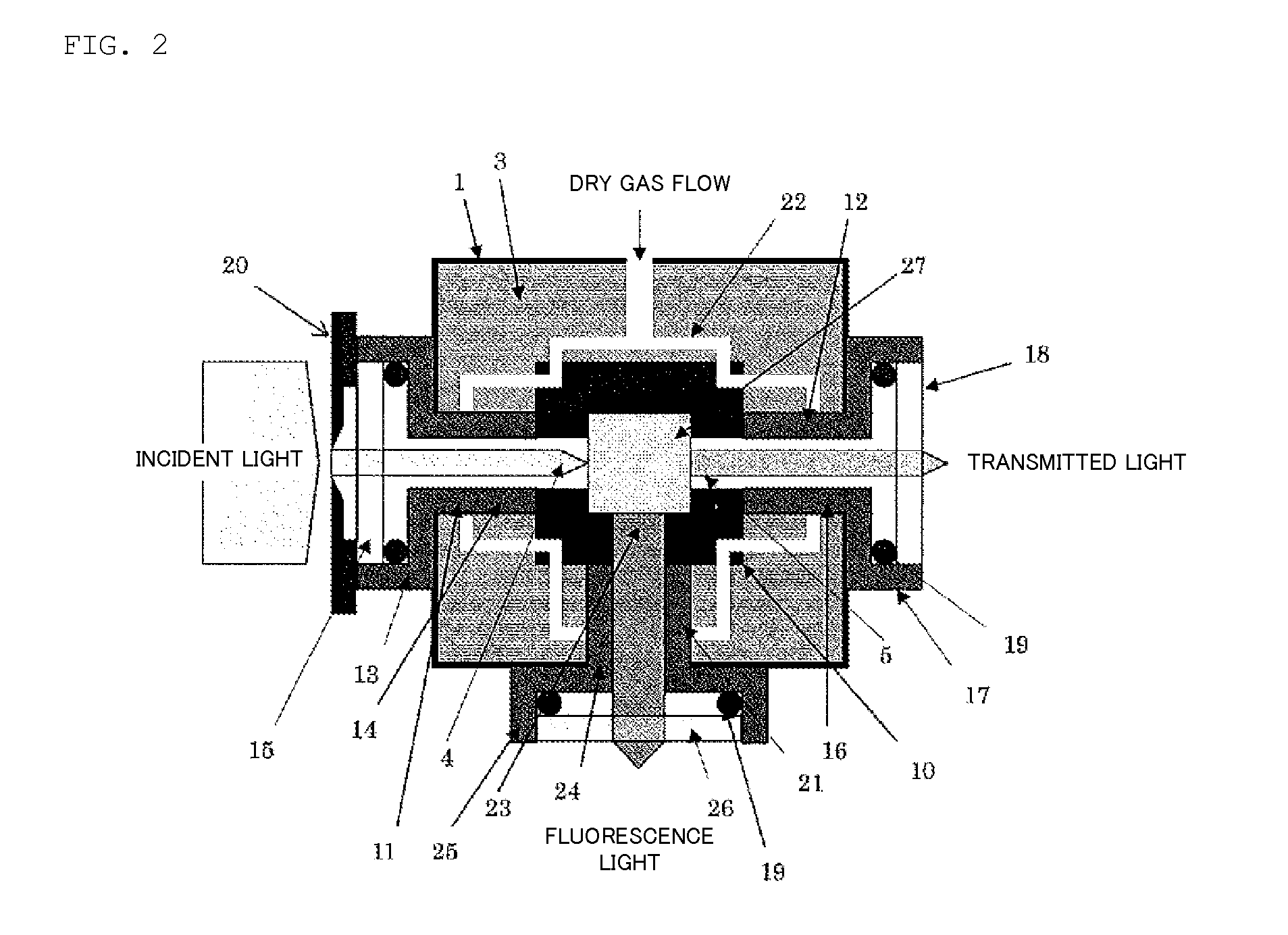Cryostat
a cryostat and surface technology, applied in the field of cryostats, can solve the problems of increasing difficult to achieve the effect of effective suppression of so as to achieve the effect of effectively suppressing water condensation on the surface, and reducing the size of cryostats
- Summary
- Abstract
- Description
- Claims
- Application Information
AI Technical Summary
Benefits of technology
Problems solved by technology
Method used
Image
Examples
examples
[0080]Examples and Comparative Examples will be shown below to more specifically describe the present invention. However, the present invention is not limited to the Examples.
example 1
[0081]A cryostat having the structure shown in FIG. 1 was assembled.
[0082]A composition containing the components described in Table 1 below was used for a sealing material 19.
TABLE 1Fluorine-containing polymer (product name “Dyneon LTFE100g6400X”, manufactured by Sumitomo 3M Limited)Thermal carbon black N990 (MT Carbon)50gZinc oxide5gPeroxide (product name “DBPH-50”; manufactured by2.5gVarox)Cross-linking agent (manufactured by TAIC; 72%)2.5gLubricant (product name “WS 280”; manufactured by0.5gStruktol)
[0083]The water vapor transmission rate of the above fluorine-containing polymer (Dyneon LTFE 6400X) is 520 cc·cm2·mm·sec·cm Hg×1010.
[0084]The diameters of the light inlet 4, light outlet 5, first optical path tube 11, second optical path tube 12, and fluorescence light exit port 23 provided in the heating / cooling block 10 were all 10 mm.
[0085]The first optical window 15, second optical window 18, and third optical window 26 used were all made of synthetic quartz, and had a round sha...
example 2
[0089]A cryostat having the structure shown in FIGS. 3 and 4 was assembled.
[0090]More specifically, a cryostat was assembled in a manner similar to those in FIGS. 1 and 2, except that the diameters of the first optical window 15, second optical window 18, and third optical window 26 were all 15 mm; the aperture window 20 was not provided; the diameters of the first cavity 8, second cavity 9, and third cavity (not shown) were all 18 mm; and the gas flow path 22 was not provided.
PUM
| Property | Measurement | Unit |
|---|---|---|
| diameters | aaaaa | aaaaa |
| temperatures | aaaaa | aaaaa |
| diameters | aaaaa | aaaaa |
Abstract
Description
Claims
Application Information
 Login to View More
Login to View More - R&D
- Intellectual Property
- Life Sciences
- Materials
- Tech Scout
- Unparalleled Data Quality
- Higher Quality Content
- 60% Fewer Hallucinations
Browse by: Latest US Patents, China's latest patents, Technical Efficacy Thesaurus, Application Domain, Technology Topic, Popular Technical Reports.
© 2025 PatSnap. All rights reserved.Legal|Privacy policy|Modern Slavery Act Transparency Statement|Sitemap|About US| Contact US: help@patsnap.com



